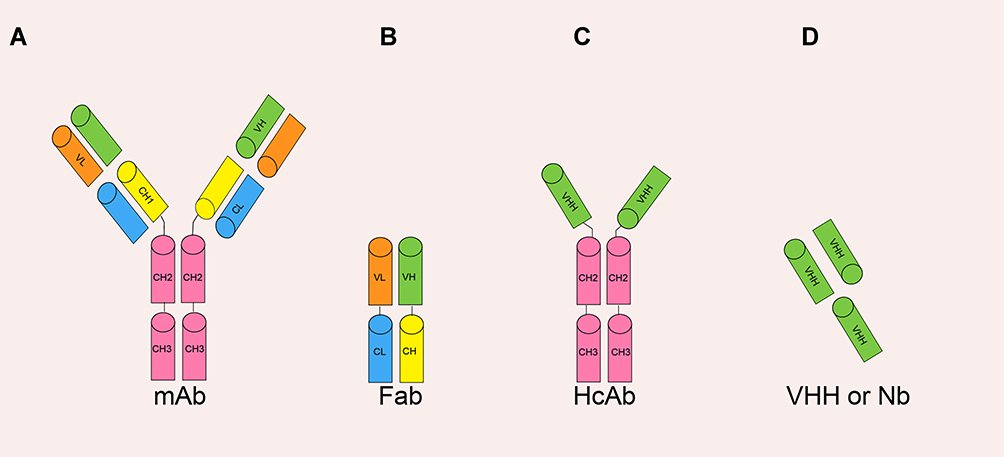Since 1975, monoclonal antibodies have been successfully used for the diagnosis and therapeutics. In 1993, heavy-chain-only antibodies which bind to antigens was discovered in camelids. The variable domain of heavy chain antibody (VHH) was called as nanobodies and it was anticipated as the better therapeutic antibodies in future due to its high stability, refoldability, and manipulable characteristics. VHH has also been effectively used for the diagnosis, bioimaging, immunoassay and affinity purification. The production of nanobodies is simple and cost effective compared to the polyclonal antibodies. Besides, Nbs are stable in a wide range of temperatures and pH levels. Nanobodies are also compatible with genetic engineering methods, which allow scaffolding and alteration of amino acids to improve binding. Relating to structure, the hydrophilic side of nanobodies, that is not present in conventional antibodies, means they do not have issues with solubility and aggregation. The conventional antibodies do not bind well in grooves or cavities on the surface of the antigen. But, Nanobodies bind with the clefts of the active site of antigen.

Figure 1. The various antibody formats: (A) mAb (monoclonal antibody); (B) Fab (fragment antigen binding); (C) HcAb (camel heavy-chain antibody); (D) VHH or Nb (nanobody) (adopted from: Bates A, Power CA. (2019) David vs. Goliath: The Structure, Function, and Clinical Prospects of Antibody Fragments. Antibodies, 8:28).
